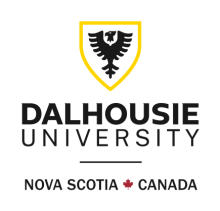It was an election result that surprised a nation. Much like the UK’s general election in May, opinion polls before the vote had pointed to a hung parliament, but a single party ended up winning a surprise majority. Unlike in the UK, in Canada it was won by the Liberal Party, which began the campaign in third place and ended up bringing an end to nearly a decade of Conservative rule.
Interestingly, Canada’s new prime minister, Justin Trudeau, won the election for the Liberal Party after two failed attempts by academics. His immediate predecessor, Michael Ignatieff, who has held senior posts at the universities of Cambridge, Oxford, Harvard and Toronto, lost his seat in the 2011 federal election in the party’s worst result in history. Stephane Dion, a political scientist, led the party from 2006 until it was defeated in the 2008 general election.
Although never an academic, like his predecessors Trudeau has a history of working in education. He was a schoolteacher for several years, which he claims he was driven to do in order to have a “positive influence in the world”, and he has long placed education high on his political agenda.
Writing in the Huffington Post two years ago, he said the “core of Liberal economic policy should be to make Canada the best educated country on Earth”.
“I believe that there is no more important principle than equality of opportunity – and the progress it generates – for individual Canadians and for Canada,” he wrote.
“I further believe that guaranteeing Canadians access to affordable, high quality, lifelong education is the single most important policy goal to strive toward.”
These are easy promises to make but not so easy to deliver.
Ahead of the election earlier this month, Trudeau fleshed out these plans, which centred on increasing Canada Student Grants (state-funded bursaries for tertiary study) by 50 per cent to C$3,000 (£1,500) a year. Announcing the policy at Wilfrid Laurier University, he said that graduates would start repayment once they are earning at least C$25,000 a year. According to Statistics Canada, on average undergraduate students paid C$5,959 in tuition fees in 2014-15, so the grant would cover roughly half of the fees.
Another major policy, which he has long campaigned for, is to increase the proportion of Canadians with post-secondary education to 70 per cent from the current rate of just over 50 per cent. Making student loans repayable according to income earned after graduation, creating a personal registered education savings plan programme and working with private and non-profit sectors to increase workplace training, could help on this front.
Other Liberal Party policies, which the Canadian Association of University Teachers have urged the government to address quickly, include appointing an independent chief science officer and “unmuzzling” government scientists; restoring funding for the Experimental Lakes Area and federal ocean science; increasing funding for the Post-Secondary Education Support Program for Aboriginal students; and amending anti-terrorism legislation to protect academic freedom.
The organisation’s main ask, however, is for the government to restore the mandatory long-form census, which was a backbone for academic research across the country, and expand the capacity of Statistics Canada.
It also urged the party to strengthen its commitment to science by boosting funding for basic university and college research.
Earlier this year I wrote a story based on comments from Robert Brownstone, a leading neuroscientist at Dalhousie University in Halifax, who said that he left the country to take up a post at University College London due to the Canadian government’s “worrisome” research funding cuts.
Interestingly, New Democratic Party MP Pierre-Luc Dusseault, who won his seat in the 2011 federal election at the age of 19 while he was a first-year student studying applied politics at the Université de Sherbrooke, has kept his seat in this election.
Four McGill University students and fellow New Democratic Party members were elected in 2011 too. Just one, Matthew Dubé, has kept his seat this time round.
The party’s pre-election plans are outlined in this document, titled “A New Plan for a Strong Middle Class”. It will be interesting to see how high up on the agenda Trudeau’s policies for higher education become.
POSTSCRIPT:
Editor's note: this blog was edited after a previous version linked to an incomplete version of the Liberal Party's pre-election proposals, which did not include post-secondary education issues. The content of the post has been updated to reflect this change.
Register to continue
Why register?
- Registration is free and only takes a moment
- Once registered, you can read 3 articles a month
- Sign up for our newsletter
Subscribe
Or subscribe for unlimited access to:
- Unlimited access to news, views, insights & reviews
- Digital editions
- Digital access to THE’s university and college rankings analysis
Already registered or a current subscriber?











